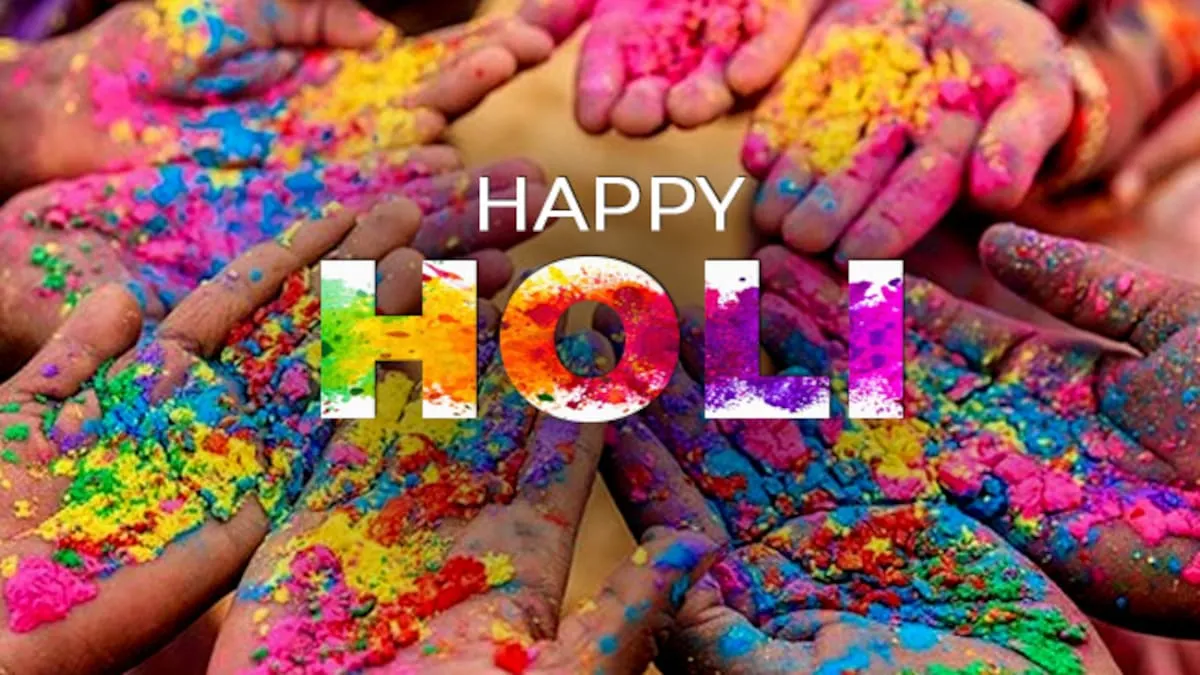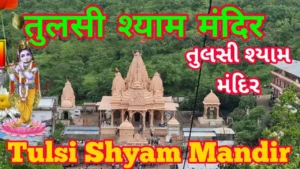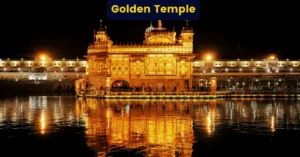Partaking in the annual Holi Festival is the most fun I had as a kid. How to Celebrate Holi, of colors, celebrated once a year in March. And growing up in a Hindu household, I absolutely loved the spectacle that came along with celebrating Holi.
One of the most remarkable things about the Indian color festival is how enthusiastic and care-free it is. It is purely a day of fun. I didn’t love being dragged to temple as a child, but going to temple for Holi was an exception. Because running around throwing colors was something I could always get on board with.
Attending a Holi festival feels like so much more than just throwing colors and taking a few pictures. It gets you out of the monotony of late winter and interacting with friends or family you might not normally have fun with. The Holi celebrations I attended were always extremely inclusive — my Hindu relatives, young and old, were excited to share the day with anyone interested in celebrating.
If you’re wondering, “What is Holi?” you might find there isn’t one straight answer to that question. Holi is a celebration of the end of winter and the beginning of spring. It’s a celebration of rebirth and new beginnings, and a time to let the bad and the negative melt away.
Whether you’re interested in attending Holi this year in the U.S., or you’ll actually be in India for Holi and want to gain a broader understanding of the holiday, we’ve got you covered. Here’s your quick cheat sheet on Holi and the festival of colors, from what the colors symbolize, to the reason Hindus celebrate Holi, to where to partake in the color party.
What Is Holi Celebrated for?
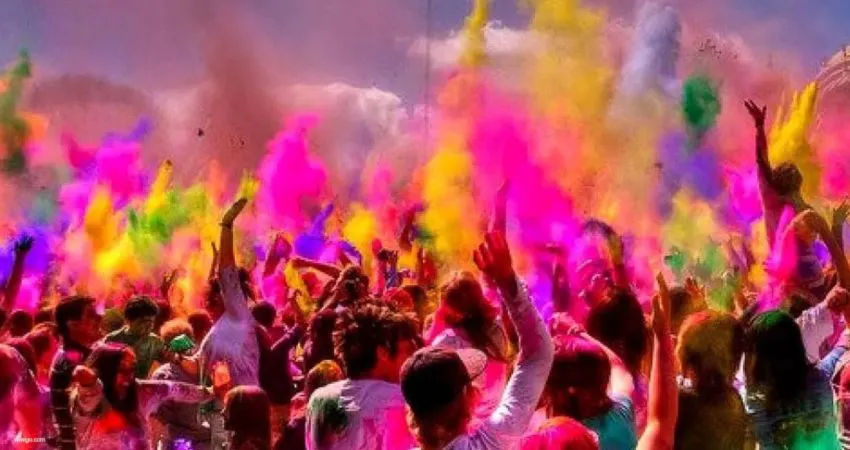
Holi is a Hindu festival that has been celebrated since ancient times. The Holi Festival is celebrated as a way to welcome in spring, and also is seen as a new beginning where people can release all their inhibitions and start fresh. It is said that during the Holi Festival, the gods turn a blind eye, and it’s one of the few times extremely devout Hindus allow themselves to let loose. They open up and enjoy each other’s company, take time to dance and party, and throw their cultural norms to the side. On the first day of the festival, a bonfire is lit to symbolically burn away all the bad and give way to a colorful and vibrant new future.
At the Holi Festival, participants throw powder dye into the air, covering all in attendance with vibrant colors. In a religious sense, the colors are rich with symbolism and have multiple meanings. They can mean a vibrant new life and even represent sin in a way. For some, washing off the dye at the end of the day can mean new commitment to live well, as cleansing oneself of evils and demons.
Read: Rajasthan Culture
Which Religion Celebrates Holi Festival?
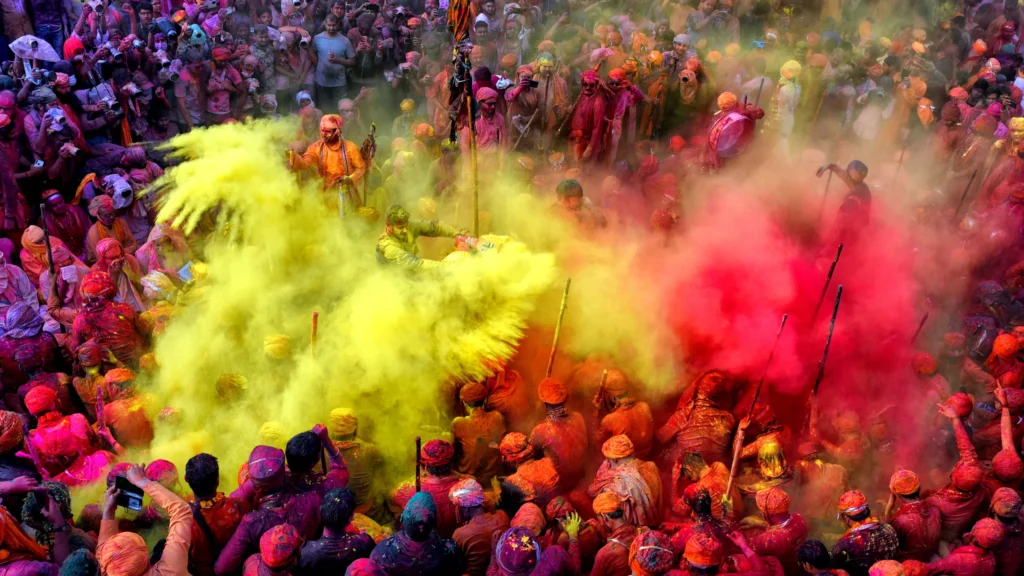
The Holi Festival is primarily celebrated by Hindus. That said, the festival is a very inclusive, as one of the main themes of the festival is unity. So, while the Holi Festival is rooted in Hindu tradition, it is a celebration that happens all over the world. It brings people together and invites them to throw away their inhibitions, feeling united in one big colorful group.
What is the history of Holi?
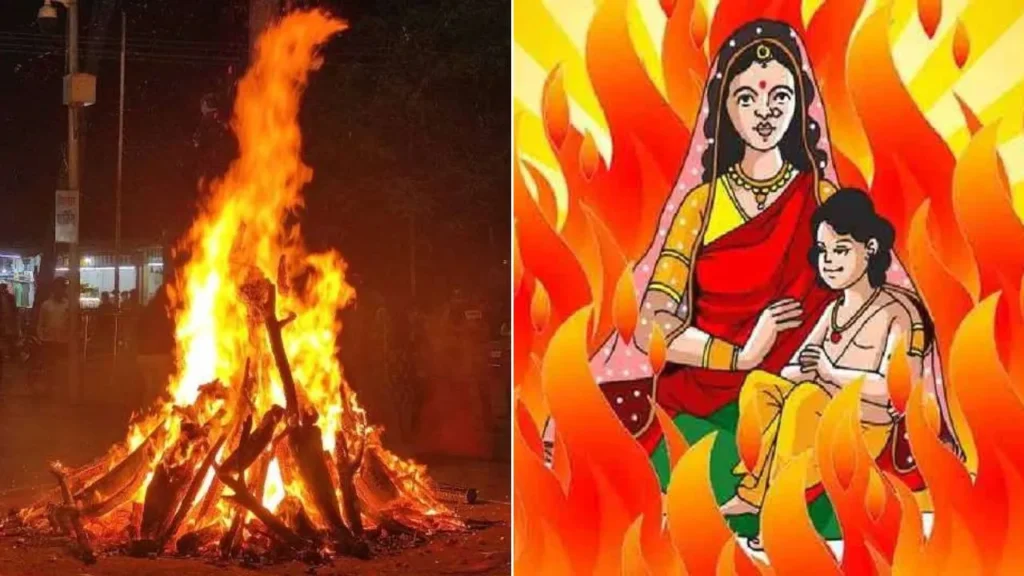
Holi is said to have been celebrated for centuries, but over time, the purpose of the festival has evolved. In its infancy, the Holi festival was supposedly a ceremony for married women to bestow well-being and prosperity on their new family and married life.
Now, one of the primary themes of Holi is the triumph of good over evil. This takes root from the story of Hiranyakashipu, a king who believed he was immortal and should be worshipped as such. His son, Prahlad, was a devoted worshipper of Vishnu, a Hindu deity, and it displeased Hiranyakashipu that his own son would worship Vishnu over him. As the story goes, Lord Vishnu appeared in the form of a half-lion, half-man and killed Hiranyakashipu, and thus, good triumphed over evil.
The other story often associated with Holi is the story of Krishna and Radha. Krishna is always depicted with blue skin — his skin turned blue as a baby when he drank poisonous milk from a demon, according to Hindu legend. Krishna fell in love with Radha. But was worried that Radha would not feel the same way because of his skin. Radha let Krishna apply color to her skin, and they became a couple. And so on Holi, we apply color to each other’s skin.
When is Holi?
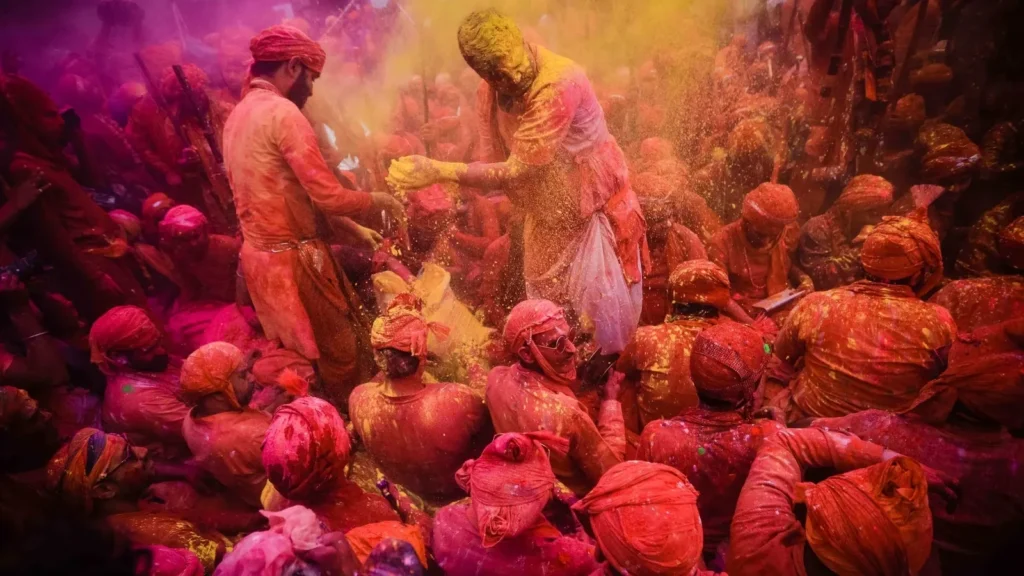
Holi always falls on the full moon that occurs during Phalguna, a month in the Hindu calendar. That corresponds with late February and early March in the Gregorian calendar. The eve of the festival, Holika Dahan, is when the customary puja and bonfire is held, and the following day — Purnima or Rangwali Holi — is when the full festival of colors occurs. (That’s the day filled with color throwing, water gun spraying, and dancing in the streets.) In 2024, Holi falls on March 24 and 25.
What Are Some Ways to Experience the Holi Festival?
If you live in the United States, you may be able to find a large city that hosts a Holi Festival. Or Festival of Colors. For the full experience though, you need to attend a Holi Festival celebration in India. And a great way to experience Holi in India is to volunteer there. Check out Helen’s recap of volunteering in India and experiencing the Holi Festival firsthand. Whether or not you’re there for the actual festival. You’ll gain a deeper understanding of Indian culture and Hinduism, and become enveloped in the country’s rich heritage.
What Is the Holi Festival Like?

The Holi Festival is wild: think big crowds, colored dye, water guns, music, dancing, and partying. During the Holi Festival, people dance through the streets and throw colored dye on each other. The Holi Festival is a happy time when people come together as one and let go of their inhibitions.
Where Is Holi Festival Mainly Celebrated?
Holi Festival is mainly celebrated in India and Nepal, but over the years it has grown to be a celebration. That takes place in many communities all across the globe. The festival is most widely and openly celebrated in cities like Delhi, Agra, and Jaipur. And while each city may celebrate slightly differently, you can expect to see plenty of colors, music, and dance.
What are the biggest takeaways?
India is an amazingly religious and culturally rich country to visit. From the Holi Festival to the people to the animals. There are so many experiences to be had and connections to be made. Take some time to learn about India and its rich traditions and plan your volunteer trip today. If you’re lucky, you may even have an authentic Holi Festival experience!
Also Read: Festivals of Gujarat
Conclusion
The Holi Festival, celebrated annually in March, is a vibrant and joyous event deeply rooted in Hindu tradition. It marks the arrival of spring and symbolizes the triumph of good over evil. Participants engage in throwing colorful powder dye, signifying the shedding of negativity and embracing new beginnings. While primarily a Hindu festival, Holi is celebrated worldwide, fostering unity and inclusivity among communities. Its history is rich with legends, including tales of Krishna and Radha, adding to its cultural significance.
For those seeking to experience Holi, attending a festival either in India or in communities across. The globe offers a chance to immerse oneself in its lively atmosphere. The celebration involves music, dancing, and spirited gatherings, making it a memorable and exhilarating experience for all involved. Holi embodies the essence of joy, togetherness, and renewal, making it a cherished tradition cherished by millions around the world.

